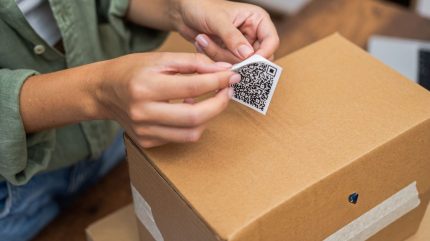
In today’s fast-paced digital world, connected packaging has emerged as a game-changer, enhancing consumer interaction through technologies like QR codes and augmented reality (AR).
This innovative approach not only transforms traditional packaging into interactive platforms but also creates new opportunities for brands to engage with their customers.
Smart packaging: a new era of consumer interaction
Connected packaging utilises technologies such as QR codes, Near-Field Communication (NFC), and Radio Frequency Identification (RFID) to deliver a more engaging and informative consumer experience.
QR codes, in particular, have become ubiquitous, allowing consumers to access product information, promotions, and even exclusive content simply by scanning with their smartphones.
For example, brands like Hershey’s and Coca-Cola use QR codes to provide transparency about product ingredients and manufacturing processes, enhancing consumer trust and loyalty (Noramble, Domino Printing).
AR takes this a step further by overlaying digital information onto the physical world, creating immersive experiences. Imagine scanning a package to see a 3D model of the product or a virtual try-on for cosmetics.
This technology not only engages consumers but also provides them with valuable information in an interactive format (Fortune Packaging).
Enhancing consumer trust and engagement
One of the primary benefits of connected packaging is the ability to build and maintain consumer trust. In an era where transparency and authenticity are highly valued, smart packaging provides detailed product histories, sourcing information, and sustainability credentials.
For instance, Napolina’s tomato tins come with QR codes that allow consumers to trace the product’s journey from farm to table, thus reinforcing the brand’s commitment to sustainability (Raconteur).
Connected packaging can also enhance consumer engagement by offering personalised experiences. By scanning QR codes, consumers can receive tailored recommendations, exclusive discounts, and participate in interactive campaigns.
This direct connection between the brand and the consumer not only fosters loyalty but also provides brands with valuable first-party data to better understand consumer preferences and behaviours (Packaging Insights).
The future of smart packaging technologies
The future of smart packaging is brimming with potential, driven by continuous advancements in technology. Beyond QR codes and AR, emerging technologies like the Internet of Things (IoT) are set to revolutionise the packaging industry.
IoT-enabled packaging can provide real-time product data, enhancing supply chain transparency and improving decision-making processes (Fortune Packaging).
Sustainability is also a key focus in the evolution of smart packaging. By incorporating eco-friendly materials and technologies, brands can reduce their environmental footprint while meeting consumer demands for sustainable products.
Sensors embedded in packaging can monitor product freshness, reducing food waste, and facilitating recycling efforts through clear disposal instructions.
The takeaway
Connected packaging is transforming the way consumers interact with products and brands. By leveraging technologies like QR codes and AR, brands can create engaging, informative, and personalised experiences that build trust and foster loyalty.
As technology continues to evolve, the potential for smart packaging is vast, promising even more innovative and sustainable solutions in the future.
For brands looking to stay ahead, adopting connected packaging technologies is not just an option but a necessity to meet the growing expectations of tech-savvy consumers and to maintain a competitive edge in the marketplace.



